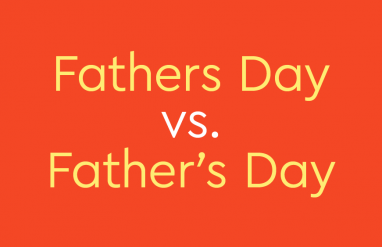Everybody likes lists. Nobody likes long, confusing lists. And that’s why we use bullet points to gather up major points or items and organize them neatly into a list. However, bullet points are just a tool in the toolbox; it is still up to the each writer to know how to use them to make a list or summary that is concise and easy to follow. While proper bullet point usage often relies heavily on a style guide, there are some general tips to ensure our bullet points always hit the mark.
What is a bullet point?
A bullet point is a symbol that is used in writing to introduce an item in a list. A commonly used symbol to represent a bullet point is a centered dot (•), but many different symbols and characters can be used in bullet point lists. Sometimes, bulleted lists even use numbers and/or letters.
✏️ Example usage of bullet points
The following example shows how a list with bullet points might appear in writing:
The experiment studied how children reacted differently to a variety of Halloween monsters. There were several major takeaways from the study:
- Werewolves were consistently rated to be the scariest monsters.
- Ugly vampires were typically said to be scarier than other types of vampires.
- Zombies scored higher scariness ratings with young girls than with young boys.
- Clowns, despite being a control group, scored unexpectedly high scariness ratings.
When do you use bullet points?
In writing, bullet points are typically only used in lists. In general, formal writing reserves bulleted lists for certain situations, such as the quick presentation of important information or to efficiently summarize a writer’s major points. In informal writing, bulleted lists can be used for a wide variety of reasons, such as presenting a list of ingredients or giving step-by-step directions on how to do something.
This means that you’ll need to use your own judgment on when a list with bullet points might be the best way to present information. In general, bulleted lists are helpful when you want to quickly and efficiently give a reader important information. In formal writing, it is usually recommended to not overuse bulleted lists and save them for when you really need to capture an audience’s attention.
The following examples show just some of the different ways we might use lists with bullet points in different pieces of writing:
Summarizing
Bullet points are useful for summarizing a longer, more complicated argument or topic. For example:
In conclusion, dogs clearly make better pets than cats. In this thesis paper, I have argued that:
- dogs are good pets, while cats are nefarious troublemakers
- dogs live up to their moniker of “man’s best friend,” while cats merely tolerate humans at best
- dogs can perform a variety of useful jobs for society, while cats are unapologetic freeloaders
With these major points in mind, dogs clearly are the superior pet.
Highlighting major points
Bullet points can neatly order a writer’s major pints. For example:
After reading this guide to computers, you will be able to
- create folders and files
- set up an internet connection
- connect your computer to wireless devices
- navigate all of the programs that come with your operating system
- install and use virus protection software
List of items
Bullet points are useful or organizing lists. For example:
In order to make this recipe, you will need:
- milk
- eggs
- flour
- strawberries
- bananas
- cocoa powder
- butter
- cream cheese
Pssst. Are you a writing rebel? We’ll tell you which grammar rules were meant to be broken.
Directions
Bullet points can help organize detailed instructions or directions. For example:
In order to reach the museum from Main Street, follow these directions exactly:
- Drive south and turn left onto 2nd Street
- Drive two miles, then merge onto Interstate 12
- Drive ten miles, then take exit 17a
- Pass the third intersection, then take the second right
- Look for the museum on your right after passing the giant inflatable gorilla
How to use bullet points
In general, the formatting and rules of bulleted lists will depend heavily on the style guide that you use. Style guides often have specific rules regarding indentation, margins, capitalization, punctuation, and which symbols to use as bullet points. As always, it is best to follow whatever rules are listed in the style guide you use. If you don’t use a particular style guide, it is best to at least stay consistent with whatever formatting you decide to use.
If not using a style guide, there are some general recommendations common among writing resources:
1. It is recommended to introduce a bulleted list with an introductory sentence or headline.
2. Punctuation is typically reserved for complete sentences. For example, the following bulleted list uses sentence fragments:
- rain
- snow
- sleet
- a little bit of fog
This list, on the other hand, uses complete sentences:
- Students will sit in Section B.
- Arena staff will sit in the front three rows.
- VIPs may sit wherever they please.
- All audience members must remain seated for the entirety of the performance.
3. In general, complete sentences are usually capitalized. Sentence fragments may or may not be capitalized depending on the writer.
4. It is commonly recommended that the elements of a bulleted list be relatively the same length.
5. Each bullet should begin with the same part of speech: verb, adjective, noun, etc.
6. Numbers/letters are used when the order of the items matters or when the list will refer to other specific entries in the list.
However, none of these recommendations are established rules of using bulleted lists. In general, you can use whatever format you like when using a bulleted list—if not following a style guide, of course. The important thing is to remain consistent and try to stick to a format that isn’t difficult for an audience to read or follow.
Take this quiz to see how much you know about bullet points and other typographical symbols.
Get to the point with Grammar Coach™
Confused about punctuation and its proper use? The Thesaurus.com Grammar Coach™ platform makes writing papers, essays, emails, and a whole lot more a whole lot easier. This writing tool uses machine-learning technology uniquely designed to catch grammar as well as spelling errors. Its Synonym Swap will find the best nouns, adjectives, and more to help say what you really mean, guiding you toward clearer, stronger, writing.















